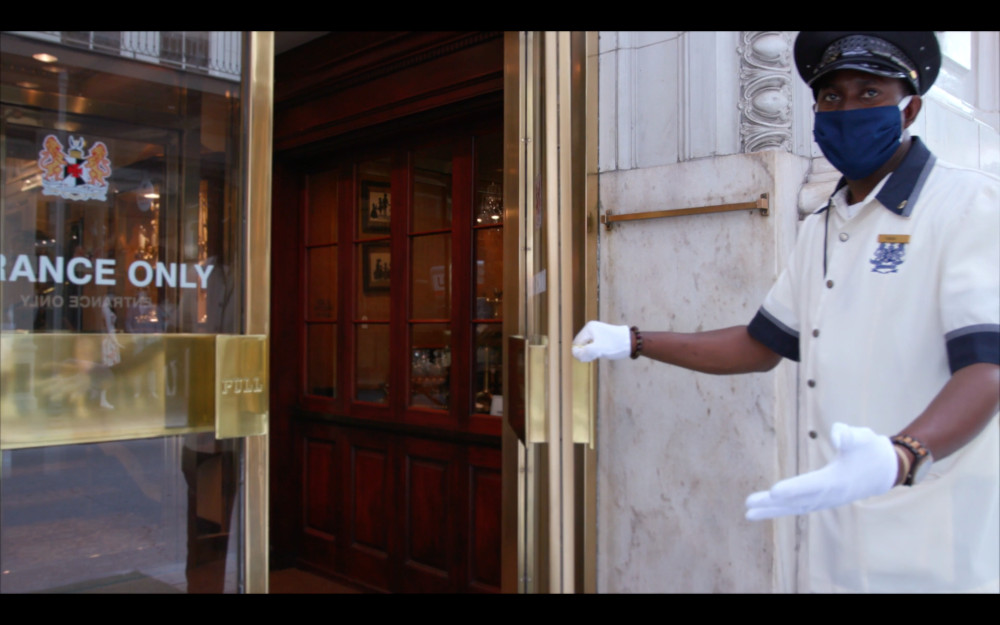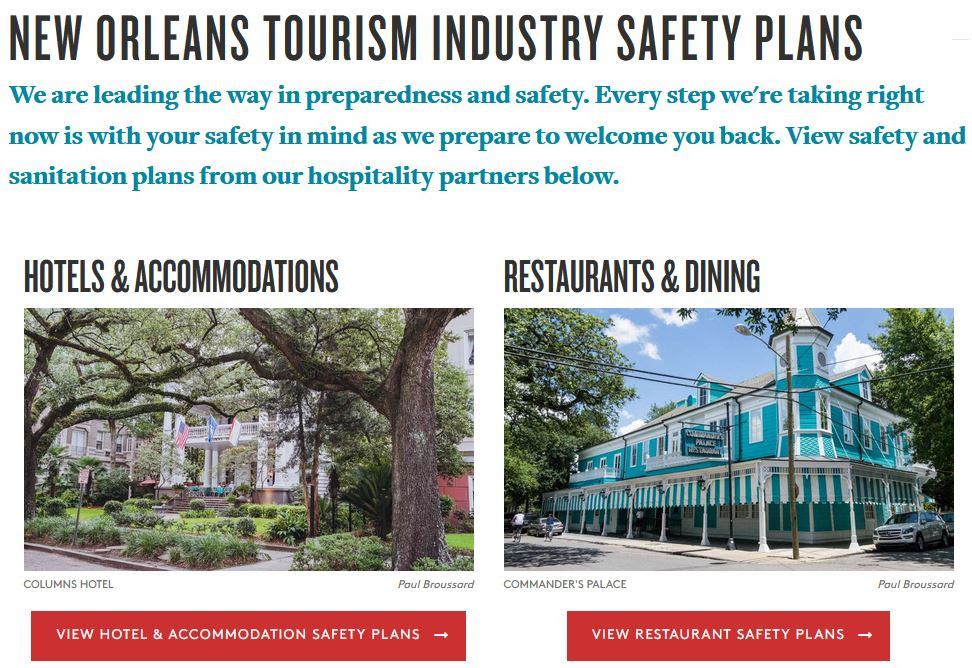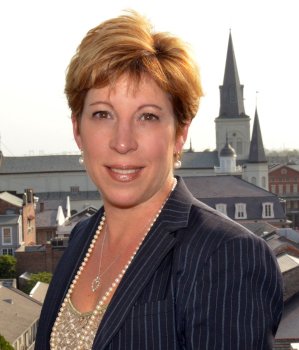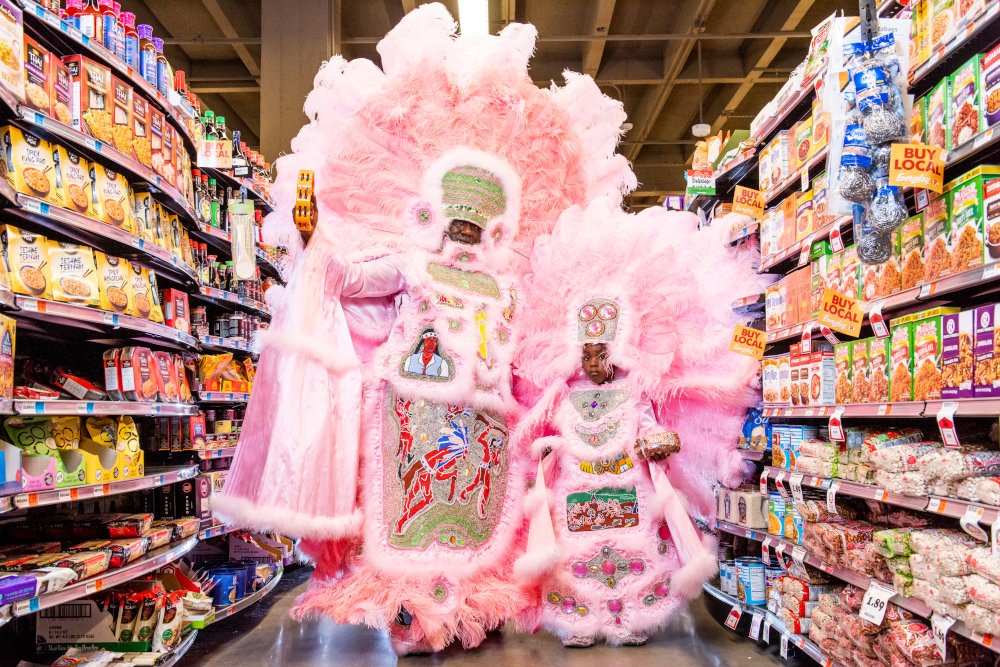No destination in the world is better known for its love of massive celebrations as New Orleans, with its motto “laissez les bon temps rouler”—“let the good times roll,” for the uninitiated—serving as a call to action en masse.
Everyone’s favorite party town was hit hard by COVID-19, with many believing that the epitome of massive close-quarters festivals, Mardi Gras, held February 25, played a major role in the pandemic’s subsequent spike in the Crescent City.
But while the party is most definitely on hold in New Orleans these days, the destination’s hospitality community and CVB have been on point by instituting safety protocols and communicating progress to the public.
At publication time in mid-July, New Orleans was in Phase 2 of a state-controlled recovery plan, with a maximum of 250 attendees allowed at a meeting. Its hotels are all following social distancing protocols established by the U.S. Centers for Disease Control and Prevention.

Photo: New Orleans’ Hotel Monteleone has joined its counterparts by adopting sanitation protocols set forth by the CDC. Credit: New Orleans & Company
“Our message is one of real communication and dialogue,” said Stephanie Turner, vice president of convention sales and strategies for New Orleans & Company, the city’s CVB. “Our role has shifted from sales to being really methodical and detailed in the information we provide. What we’re trying to do is provide as much information to our community as possible, with the caveat that everything changes every day.”
According to the CVB, as of the end of June it has shared nearly 80 emails with its approximately 1,100 members since March, and continues to communicate with its meetings, conventions and events customers as well as visitors via weekly outreach.
Key to the communication effort is the continually updated status and safety protocol plans and information available on New Orleans & Company’s robust website, www.neworleans.com.

Photo: New Orleans & Company’s website features a comprehensive amount of information about COVID-19 sanitation protocols. Credit: New Orleans & Company
A truly comprehensive list of safety and sanitation plans is provided for the following tourism and meetings draws:
- Hotels
- Restaurants
- Attractions
- Transportation
- Louis Armstrong International Airport
- Mercedes-Benz Superdome
- Smoothie King Center
- Ernest N. Morial Convention Center
- Meeting and event venues
Turner added that at publication time, the Ernest N. Morial Convention Center was pursing GBAC STAR accreditation, an outbreak prevention, response and recovery accreditation for facilities that focuses on cleaning, disinfection and infectious disease prevention.
Legal Protection for Meetings and Events
In June, Louisiana Gov. John Bel Edwards signed into law House Bill 826, a package of measures that provides for liability limitations from lawsuits relating to COVID-19, including protection for meeting planners and tradeshow and convention organizers.
The language in the statute, which is retroactive to March 11, 2020, specifically provides limitation of liability for those who are engaged in “hosting, promoting, producing or otherwise organizing, planning or owning a tradeshow, convention, meeting, association-produced event, corporate event, sporting event or exhibition of any kind.”
“We are aware of no broader protection afforded to meeting professionals anywhere in America,” said Mark Romig, senior vice president and chief marketing officer for New Orleans & Company. “It provides liability limitations to groups and events as it relates to COVID-19.”
Resilience and Community
 New Orleans is a city that has seen its share of misery on a grand scale, but it’s also renowned for its resilience and sense of community, evidenced to full effect during 2005’s Hurricane Katrina.
New Orleans is a city that has seen its share of misery on a grand scale, but it’s also renowned for its resilience and sense of community, evidenced to full effect during 2005’s Hurricane Katrina.
(Photo: Mark Romig, senior vice president and chief marketing officer for New Orleans & Company)
“There’s been a number of efforts by organizations and hospitality organizations for gig workers, musicians and hospitality workers,” Romig said. “I went through Katrina and worked for an agency that did the public relations for New Orleans Tourism Marketing Corporation. This is a little bit different, because during Katrina we had the world coming to our rescue. Here, we’re like every other destination in that we have to pull ourselves up by our own.
“But we have this shared mental approach in that this is going to be tough, but we’re going to get through it,” he added.
Noteworthy civic charity endeavors during the pandemic include:
- Grants from the United Way and Louisiana Hospitality Foundation to people impacted by the pandemic.
- A Feed the Front Line effort by Krewe of the Red Beans to feed frontline hospital workers via ordering food from New Orleans restaurants, which have been hard hit by the pandemic shutdown. The program concluded in early May after feeding more than 2,300 hospital workers, pumping more than $1 million into the local economy and hiring local musicians to deliver the food.
- A Feed the Second Line effort has since followed the same principals as Feed the Front Line and has so far raised more than $1 million for New Orleans “culture bearers” such as artists and musicians. Krewe of the Red Beans encourages the public to contribute to the effort via Feed the Second Line’s website: www.feedthesecondline.org.
 According to Turner, the city of New Orleans has also relaxed regulations in order to allow its more than 1,400 restaurants to expand into parking lots and out into the sidewalks without obtaining permits. New Orleans dining icon Commander’s Palace is even thinking outside of the box by arranging a Zoom happy hour every Wednesday that has wine delivered to up to 1,000 participants.
According to Turner, the city of New Orleans has also relaxed regulations in order to allow its more than 1,400 restaurants to expand into parking lots and out into the sidewalks without obtaining permits. New Orleans dining icon Commander’s Palace is even thinking outside of the box by arranging a Zoom happy hour every Wednesday that has wine delivered to up to 1,000 participants.
(Photo: Stephanie Turner, vice president of convention sales and strategies for New Orleans & Company)
All of these efforts serve the common goal of keeping the Crescent City’s beloved institutions afloat until they can get back in the business of welcoming groups when the good times are ready to roll again.
“We’re keeping our eye on the future and making sure we create a climate where it’s easy to do business, and we’re forward-thinking,” Turner said of the civic effort. “Forward thinking and preparedness are the hallmarks of what we’re trying to do for our meeting customers.”
Romig echoed Turner’s steadfast enthusiasm.
“Communicating with our clients is paramount for us,” he stressed. “Meeting planners can understand that when they choose New Orleans, they’re choosing a destination that takes it very seriously.”
Read next: How to Plan a Meeting Around One of New Orleans’ Top Festivals







